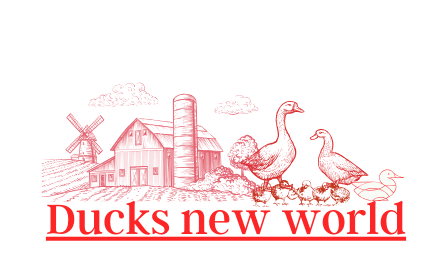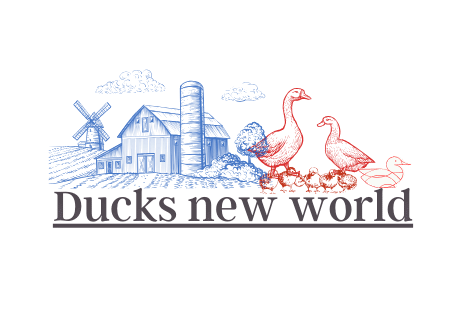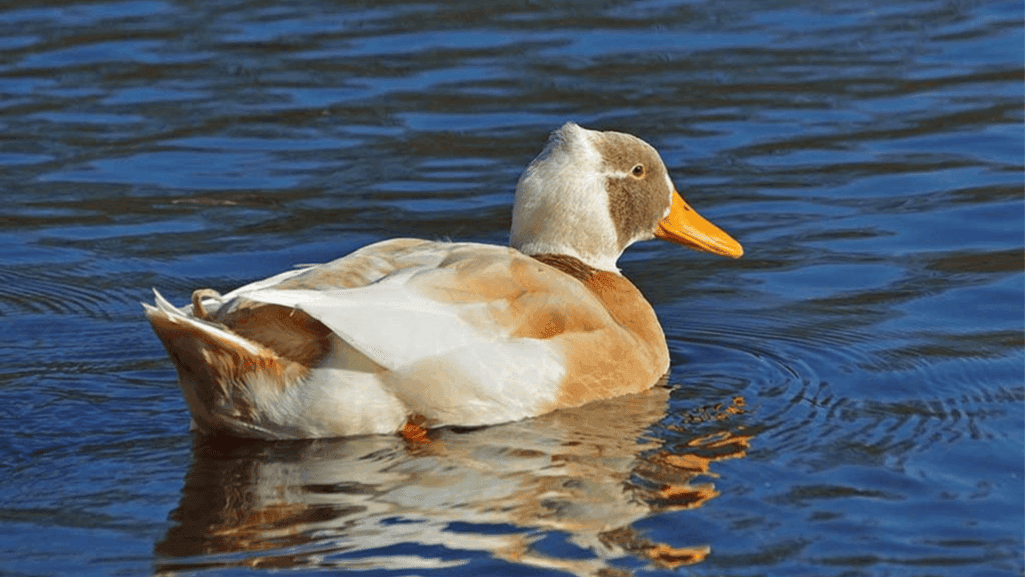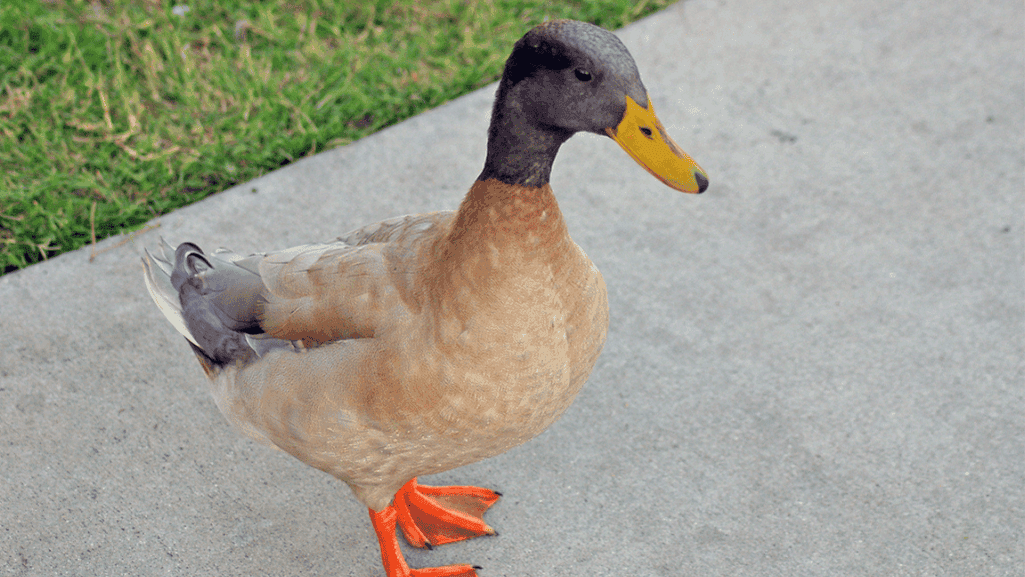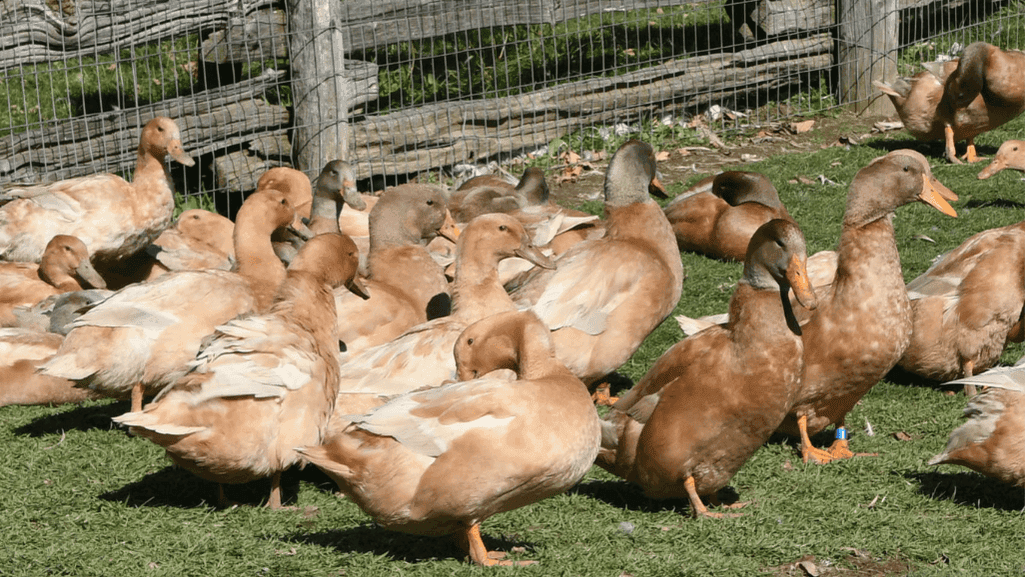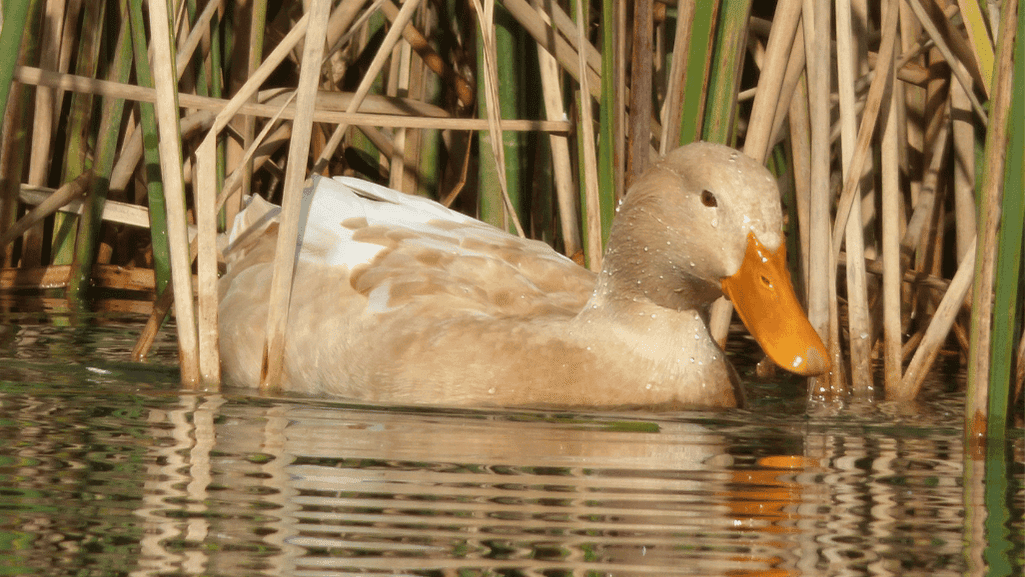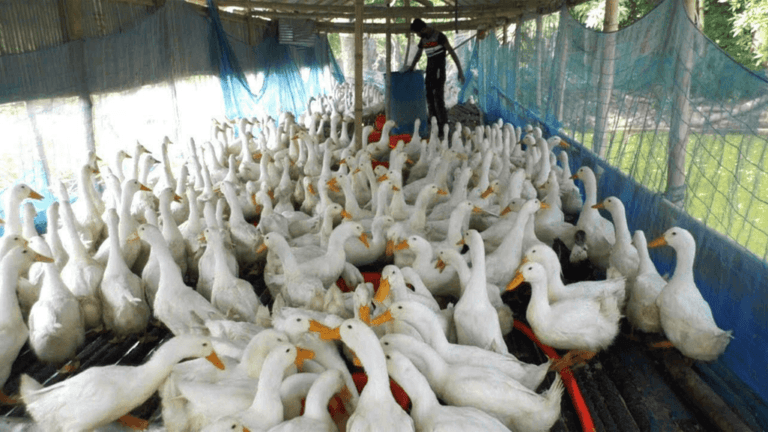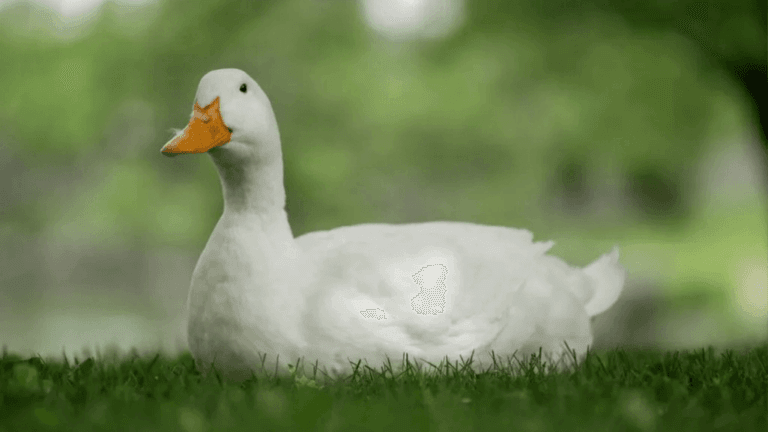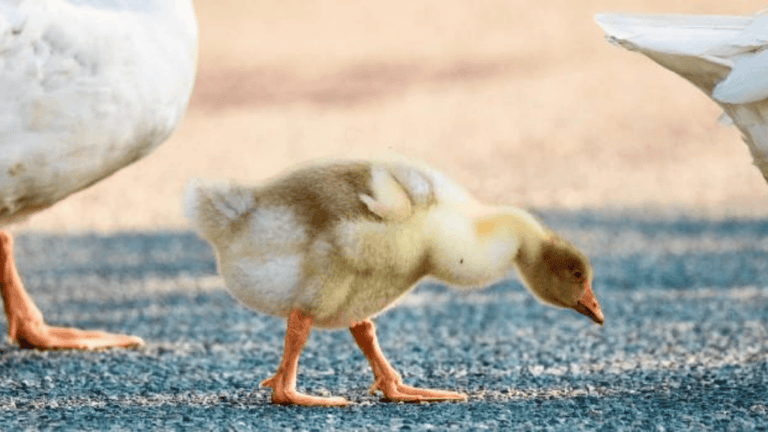The Orpington duck is a remarkable breed that has captured the hearts of poultry enthusiasts worldwide. Originating in Orpington, Kent, England, this bird was developed by William Cook in the early 1900s. Known for its dual-purpose qualities, it excels in both meat and egg production, making it a valuable addition to any farm or backyard.
One of the most striking features of this breed is its buff coloration, which gives it a unique and appealing appearance. The Buff Orpington duck, in particular, stands out with its golden plumage, making it a favorite among breeders. Recognized by the American Poultry Association in 1914, this breed has a rich history and continues to be a symbol of quality in poultry farming.
This guide will explore the breed’s origins, care tips, and fascinating facts. Whether you’re a hobbyist or a serious breeder, you’ll discover why the Orpington duck is a standout choice for its friendly nature, adaptability, and productivity.
Key Takeaways
- Developed in Orpington, Kent, England by William Cook in the early 1900s.
- Known for its dual-purpose qualities, excelling in both meat and egg production.
- Features a unique buff coloration, with the Buff variety being particularly popular.
- Recognized by the American Poultry Association in 1914.
- Friendly, adaptable, and suitable for various climates.
Introduction to the Orpington Duck Breed
Known for its dual-purpose qualities, the Orpington duck is a standout in the poultry world. This breed, developed in the early 1900s, has become a favorite among farmers and backyard enthusiasts alike. Its ability to excel in both meat and egg production makes it a practical and valuable addition to any flock.
Overview and Significance
The Orpington duck holds a special place in the poultry community. Its origins trace back to Orpington, Kent, where it was bred for its versatility. Recognized by the American Poultry Association in 1914, this breed has since gained widespread popularity. Its friendly nature and adaptability make it a top choice for both small and large-scale farming.
One of the most striking features of this breed is its buff coloration, which gives it a unique and appealing appearance. The Buff Orpington variety, in particular, is highly sought after for its golden plumage. Other color options, such as blue, add to the breed’s visual diversity.
The Appeal for Poultry Enthusiasts
Poultry enthusiasts in the United States are increasingly drawn to the Orpington duck for several reasons. Its dual-purpose functionality is a major selling point. This breed can lay up to 220 eggs per year, while also providing high-quality meat. Its calm and docile temperament makes it easy to manage, even for beginners.
“The Orpington duck is a heritage breed that combines beauty, productivity, and adaptability, making it a perfect fit for modern farming.”
Additionally, the breed’s adaptability to various climates ensures its success in different regions. Whether you’re raising a small backyard flock or managing a larger operation, the Orpington duck is a reliable choice. Its rising popularity is a testament to its enduring appeal and practical benefits.
For those interested in other heritage breeds, the Aylesbury duck is another excellent option, known for its white plumage and calm temperament.
History and Origins
The story of the Orpington duck begins in the late 19th century, shaped by innovation and careful breeding. Developed in Orpington, Kent, England, this breed owes its existence to the pioneering efforts of William Cook. His vision was to create a versatile bird that excelled in both meat and egg production.
William Cook’s Legacy and Early Development
William Cook’s work in the 1890s laid the foundation for the breed’s success. He experimented with mis-marked Blue Orpington Ducks, blending traits from multiple breeds to achieve the desired characteristics. His strategy involved crossing Cayuga, Indian Runner, Aylesbury, and Rouen ducks, resulting in a bird that was both productive and visually appealing.
Cook’s efforts culminated in the breed’s public debut at the Dairy Show in London in October 1897. The Buff variety, introduced a year later, quickly gained popularity for its striking golden plumage. This color trend in early 20th-century England played a significant role in shaping the breed’s identity.
Evolution from Multiple Breeds
The Orpington duck’s development was a collaborative effort, drawing from the strengths of various breeds. The Cayuga contributed its hardiness, while the Indian Runner added its excellent egg-laying capabilities. The Aylesbury and Rouen ducks brought size and meat quality to the mix.
By 1914, the breed was officially recognized by the American Poultry Association, solidifying its place in poultry history. Its inclusion in the American Standard of Perfection further cemented its reputation as a high-quality breed.
“William Cook’s dedication to breeding excellence left a lasting legacy that continues to influence poultry enthusiasts today.”
From its humble beginnings to its recognition as a distinct breed, the Orpington duck’s journey is a testament to the power of innovation and crossbreeding. William Cook’s vision lives on, inspiring breeders to preserve and celebrate this remarkable bird.
Physical Characteristics and Unique Traits
The physical traits of this breed make it a standout in the poultry world. Known for its medium size and broad body, this bird carries itself with an elegant posture, tilted at a 20-degree angle. Its appearance is both functional and visually appealing, making it a favorite among breeders and enthusiasts.
Plumage, Size, and Body Structure
One of the most distinctive features of this breed is its buff plumage, which gives it a golden, radiant appearance. The feathers are dense and smooth, providing excellent insulation in colder climates. Mature hens typically weigh between 5 to 6 pounds, while drakes can reach up to 8 pounds, classifying them as a light-class meat bird.
The body structure is broad and well-proportioned, with a slightly curved neck and wings that enhance its agility. The bill is another notable feature, with drakes sporting a yellow-green hue, while hens have a more subdued orange-brown shade. These differences make it easy to distinguish between genders.
Color Variations and Genetic Factors
Beyond the iconic buff color, this breed exhibits a range of variations, including blue, blond, and brown forms. These variations are influenced by genetic factors, such as the blue dilution gene, which softens the intensity of the plumage color. The buff variety, however, remains the most popular due to its striking golden hue.
Genetic diversity also plays a role in the breed’s classification. Traits like feather type, weight distribution, and size are carefully considered in show standards. For instance, the breed’s medium size and balanced weight make it ideal for both meat production and exhibition purposes.
- Medium size with a broad, elegant body structure.
- Distinctive buff plumage, with variations like blue and brown.
- Genetic factors, such as the blue dilution gene, influence color.
- Bill color differences aid in gender identification.
- Feather density and weight distribution support dual-purpose use.
These physical characteristics not only define the breed’s appearance but also contribute to its functionality and adaptability. Whether for show or production, this bird’s unique traits make it a valuable addition to any flock.
Caring for Your Orpington Duck: Tips for Breeders
Raising Orpington ducks requires attention to detail and a solid understanding of their needs. These birds thrive when provided with proper housing, a balanced diet, and a safe environment. Whether you’re a beginner or an experienced breeder, these tips will help you maintain a healthy and productive flock.
Housing, Diet, and Environmental Needs
Proper housing is essential for the well-being of your flock. Ensure each bird has at least 4 square feet of coop space and 10 square feet of run space. Predator-proof enclosures and access to fresh water, such as ponds or wading pools, are critical.
A balanced diet is key to maintaining health and productivity. Feed your ducks a mix of grains, vegetables, and protein sources like worms or bugs. Adding gravel or sand aids digestion, ensuring they absorb nutrients effectively.
Breeding Practices and Egg Production
This breed is known for its impressive egg-laying capabilities, producing 150 to 220 eggs per year. To optimize egg production, provide a stress-free environment and a nutrient-rich diet. Females typically lay three to four eggs weekly, making them a reliable choice for breeders.
When breeding, maintain a ratio of one male to five females to ensure successful mating. Incubation tips include keeping eggs at a consistent temperature and humidity level. Managing broody tendencies is also important for consistent egg output.
For more detailed guidance on raising ducks, check out this comprehensive guide on raising ducks. If you’re interested in other breeds, learn about the benefits of Pekin ducks as well.
Market Value, Culinary Uses, and Conservation
The Orpington duck’s dual-purpose nature makes it a valuable asset for both small farms and homesteads. Its ability to provide high-quality meat and consistent egg production has cemented its place in the poultry world. Beyond its economic benefits, this breed also plays a crucial role in heritage conservation efforts.
Dual-Purpose Benefits: Meat and Eggs
This breed is renowned for its versatility. It produces tender meat with favorable dressing characteristics, thanks to its light pin feathers. The buff variety, in particular, is prized for its golden plumage and excellent meat quality.
In terms of egg production, hens lay up to 220 eggs per year, making them a reliable choice for small-scale farmers. Their consistent output ensures a steady supply of large, white eggs, which are highly valued in culinary applications.
Supporting Heritage Breed Conservation
The Livestock Conservancy recognizes this breed as a heritage duck, highlighting its importance in preserving genetic diversity. With fewer than 1,000 breeding birds in the U.S., conservation efforts are essential to maintain its population.
Organizations like the Conservancy work to protect breeds like the Orpington, ensuring their survival for future generations. By raising these birds, farmers contribute to the preservation of a unique poultry resource.
“Heritage breeds like the Orpington are not just agricultural assets; they are living pieces of history that deserve our protection.”
The American Standard of Perfection has played a key role in establishing production standards for this breed. Its guidelines ensure that the Orpington remains a high-quality, dual-purpose bird, valued for both its meat and eggs.
For small farmers and homesteaders, maintaining a flock of these birds offers both practical and cultural benefits. Their adaptability, productivity, and historical significance make them a standout choice in the world of poultry.
Conclusion
The Orpington duck stands as a testament to the enduring legacy of heritage poultry breeds. Developed in the early 1900s, this breed combines beauty, productivity, and adaptability, making it a favorite among poultry enthusiasts. Its unique buff coloration and dual-purpose qualities—excellent meat and consistent egg production—ensure its place in modern farming.
Proper care, including spacious housing and a balanced diet, is essential for maintaining a healthy flock. Breeders should adhere to standards like those in the American Standard of Perfection to preserve the breed’s quality. Conservation efforts by organizations like the Livestock Conservancy highlight its importance in maintaining genetic diversity.
Whether you’re a hobbyist or a seasoned breeder, the Orpington duck offers both practical and historical value. Consider adding this remarkable breed to your flock and supporting initiatives that ensure its future. For more insights, explore resources on heritage poultry and conservation efforts.
